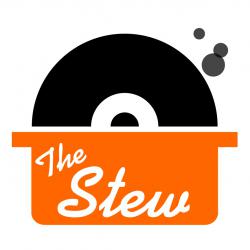To begin, start by opening an existing session or simply insert some files into the multitrack. You can do this by right-clicking inside of Track 1 and choosing Insert>Wave from File. You can even use files from the Audition Startup Session.
Insert a file into Track 1 and click on the FX button to the left of the track. This will bring up the Effects Rack. This is where you add your real-time effects and 'stack' them in the order that you desire, reminiscent of an old analog-style effects rack. On the left you have all of Audition's real-time compatible effects, as well as any DirectX effects you might have installed. Expand any of the categories, select an effect (let's try Delay Effects>Echo) and double-click on it to add it to the rack. If you're looking to create multi-effects setups, you can add multiple effects to the rack, click APPLY and then save them as rack presets to recall at any time! (click New under the Presets field, and give your setup a name)
With your Echo in place, click 'Apply' then 'OK'. Back in the multitrack view, you'll see that the FX button is now a highlighted blue color, telling you that there are real-time effects on the track. Again, these are not 'destructively' applied, and can be removed or altered at any time. Click on the FX button to bring up the Echo Dialog Window. Hit Play. Now, with your file playing back, you can adjust the delay times and other echo parameters in real time! If you want to add more effects to this track's effects rack, click the RACK SETUP button from within the Echo window. (note: it's preferable to STOP playback before adding new effects, again, this largely depends on the power of your system, but it can be done either way). This will bring you back to the Effects Rack where you can add more real-time effects. Be sure and click APPLY every time you make a change to the effects rack. You can also close the FX window when you're done; your effects will playback exactly as you set them, all in real time.
Now, here's a couple Tips about using the effects in real-time:
1) Slow or choppy playback performance. As you begin to add more effects, it begins to use more processing power. More effects require more CPU just as more tracks require more hard disk access. To combat this (particularly on slower machines) we've added a LOCK feature. By 'locking' effected tracks, it frees-up CPU, allowing for better playback performance. Once locked, you are prohibited from making changes to your effects settings, but should you want to make changes simply Unlock the track (which is nearly instantaneous), make your real-time changes, and then re-lock the track. Simple. Fast. Easy.
2) Altering effects levels over time. So, you've got some Echo or perhaps Quickverb on a vocal track, and you don't want any in the verse, but you want to add lots of verb in the chorus...how can you do this? Simply by using the Wet/Dry effects envelopes. Under the View menu, be sure and check 'Show Wet/Dry Mix Envelopes' and then check 'Enable Envelope Editing'. Your Wet/Dry envelope will show up as a Yellow line at the top of your waveblock. Simply click on the envelope and drag. Click to make multiple points, and then drag them accordingly to increase/decrease your wet/dry balance of effects. Note: you might want to disable other envelopes (like the pan and volume) while you're making changes to the Wet/Dry, just to make the visual workspace cleaner and easier - once you've made you're changes, you can re-enable all envelopes.
3) Using effects that have their own real-time envelopes. There are several effects in Adobe Audition that allow you to automate multiple parameters (with their own envelopes) in real-time. Pan/Expand, Dynamic EQ (a favorite) and Dynamic Delay are three of those effects. By adding the Dynamic EQ to the effects rack, you'll see that the you have the option to use an 'Automated' feature for Gain, Frequency and 'Q', all of the adjustable parameters for this effect. By selecting 'Auto' you'll be given three separate envelopes that you can use to draw changes over-time on your waveblock. Go to View>Show FX Parameter Envelopes to enable those. The Dynamic EQ window will tell you which parameter corresponds to which colored envelope. This is a very flexible way to create filter sweeps and truly 'dynamic' equalization effects by being able to visually alter these parameters in real-time. As you make changes to the envelopes, an info box tells you exactly what you're doing (ie, +/- Gain in dB, Actual Frequency, Q width)




